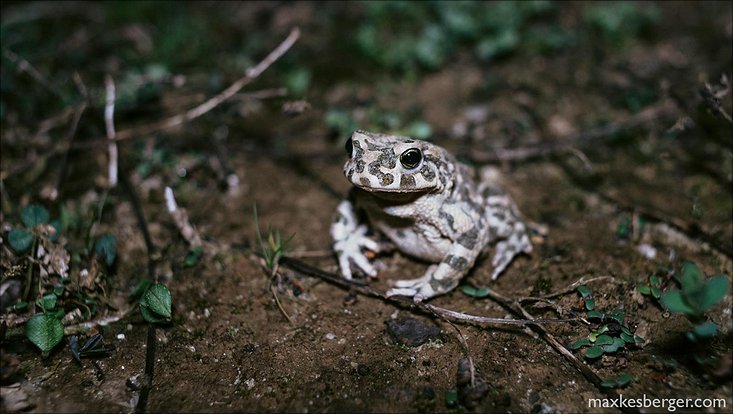
Treasure of the month October: The green toad
4 October 2018

Photo: Max Kesberger
The green toad Bufotes variabilis, which can grow up to nine centimeters, is extinct in Hamburg. A remnant population still lives in Schleswig Holstein.
As the days grow shorter and autumn arrives, not only hares and hedgehogs prepare for winter, but also the lesser-known green toad (Bufotes variabilis). It is the treasure of the month of October.
These gray animals with the green marbling belong to the rarest amphibians in northern Germany. They spend the fall and winter like all other amphibians in places protected from the cold or at the bottom of ponds in hibernation. But the green toad will not be found here in spring either, when its actual activity period begins again in April. It has been extinct in Hamburg since 1990. For this reason, environmental organizations in Schleswig Holstein are trying to create new habitats to support the spread of the remaining populations there.
One of these remaining populations of the green toad lives in a gravel pit near Woltersdorf (Duchy of Lauenburg). Steve Funder is researching this population in his master's thesis at LIB and documenting the number of toads, their age structure and the exact distribution area, including which type of water bodies the toads prefer. "These findings can contribute significantly to the protection of the animals. Using this data, we can, for example, offer the toads a habitat with the best possible conditions in which they can thrive," says Dr. Jakob Hallermann, a herpetologist at LIB. He is supervising Steve Funder in his research work.
The research is taking place in close cooperation with the Schleswig-Holstein Nature Conservation Foundation and with recourse to the scientific collections of the LIB. Here, specimens of some of these toads from the northern German region are archived. Their location data can be used to draw conclusions about the distribution patterns of the green toad in recent years.
Jakob Hallermann: "The comparison of current data from field research with surveys from earlier years is important in order to recognize changes and to be able to take protective measures."
